ACCA F5 Performance Management - 2010 - Study text - Emile Woolf Publishing
Подождите немного. Документ загружается.

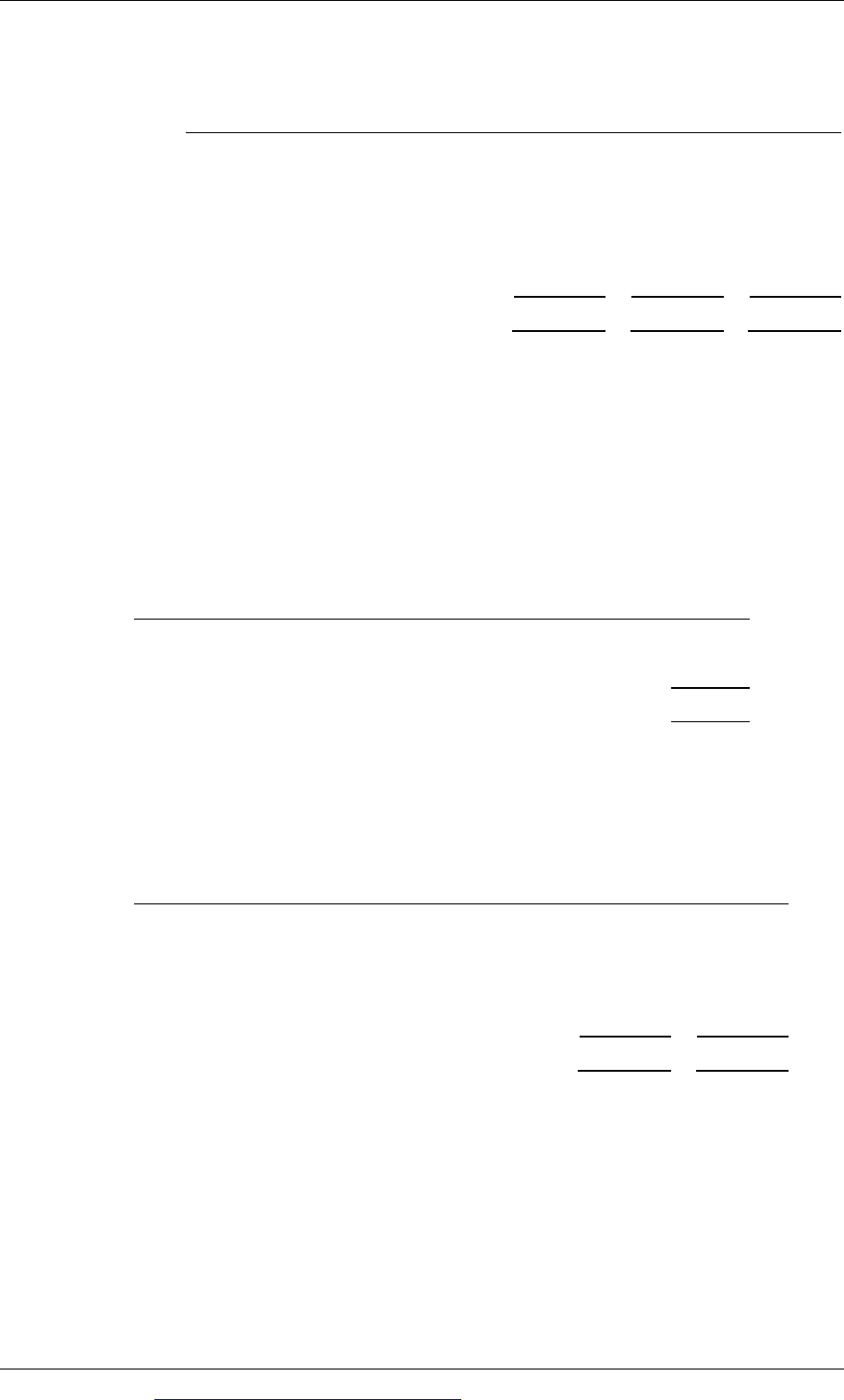
Answers
© EWP Go to www.emilewoolfpublishing.com for Q/As, Notes & Study Guides 455
ABC-based costs
Customer A
Customer
B
Customer
C
$
$ $
Material 10.00
20.00 30.00
Receipts ($13.0625/hour) 1.31
1.96 3.27
Storage ($11.575/m
2
) 3.47
3.47 3.47
Packing ($5/hour) 3.00
3.75 5.00
Product cost/unit 17.78
29.18 41.74
(b) Total costs per unit for Lardco are not much different using activity based
costing than they are with traditional absorption costing. However, ABC
analysis allows management to look at the costs of overhead-related activities.
This may help them to control these costs, through better management of
these activities and the resources they use.
3 LCC
(a)
Budgeted machine hours hours
Product V: 6,000 × 3
18,000
Product W: 4,000 × 4
16,000
Total budgeted machine hours 34,000
Budgeted production overheads $816,000
Absorption rate per machine hour $24
Product V Product W
$ $
Direct materials 20 60
Direct labour 50 40
Production overhead (3 hours/4 hours
× $24)
72 96
Full production cost per unit 142 196
(b)
Machine-related overhead costs:
Overhead cost per machine hour = $204,000/34,000 hours = $6 per machine
hour
Setup related overhead costs:
Overhead cost per set up = $280,000/(18 + 32) = $5,600 per set up.
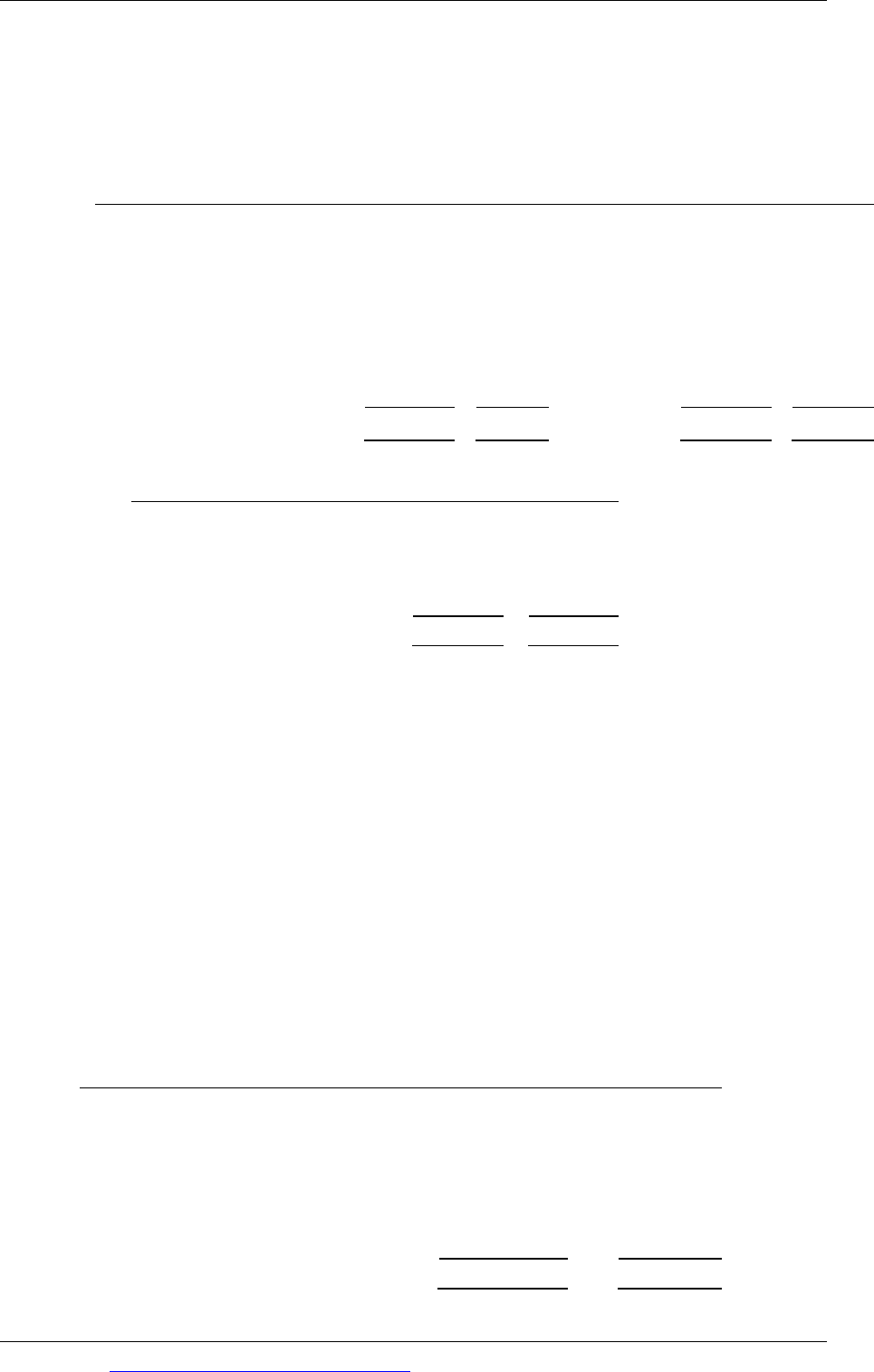
Paper F5: Performance management
456 Go to www.emilewoolfpublishing.com for Q/As, Notes & Study Guides © EWP
Purchasing-related overhead costs:
Cost per purchase order = $332,000/ (48 + 112) = $2,075 per order.
Overhead cost analysis Product V Product W
Total
cost
Cost/
unit
Total
cost
Cost/
unit
Overheads: $
$
$
$
Machine-
related
(18,000
× 6)
108,000
18.0
(16,000 × 6)
96,000
24.0
Set-up
related
(18
× 5,600)
100,800
16.8
(32 × 5,600)
179,200
44.8
Purchasing-
related
(48
× 2,075)
99,600
16.6
(112 × 2,075)
232,400
58.1
308,400
51.4
507,600
126.9
Unit costs V
W
$
$
Direct materials 20.0
60.0
Direct labour 50.0
40.0
Production overhead 51.4
126.9
Full production cost per unit 121.4
226.9
(c) ABC analysis could be used by LCC to analyse the profitability of Products V
and W. Using ABC, the overhead cost per unit of W is much higher than with
traditional absorption costing, and the cost per unit of V is less. This is because
Product W has a relatively large amount of setup activity and purchasing-
related activity.
Management could look at the reasons why Product W needs so many setups
and purchase orders, and by trying to reduce the resources used up by these
activities, it might be possible to reduce the costs (and increase the
profitability) of Product W.
4 Customer profitability
Workings
Product Units
Contribution
per unit
Total
contribution
Total sales
revenue
$ $
$
A 100,000 1.20 120,000
360,000
B 150,000 0.50 75,000
375,000
C 120,000 1.20 144,000
480,000
D 180,000 0.90 162,000
432,000
E 80,000 2.00 160,000
480,000
661,000
2,127,000
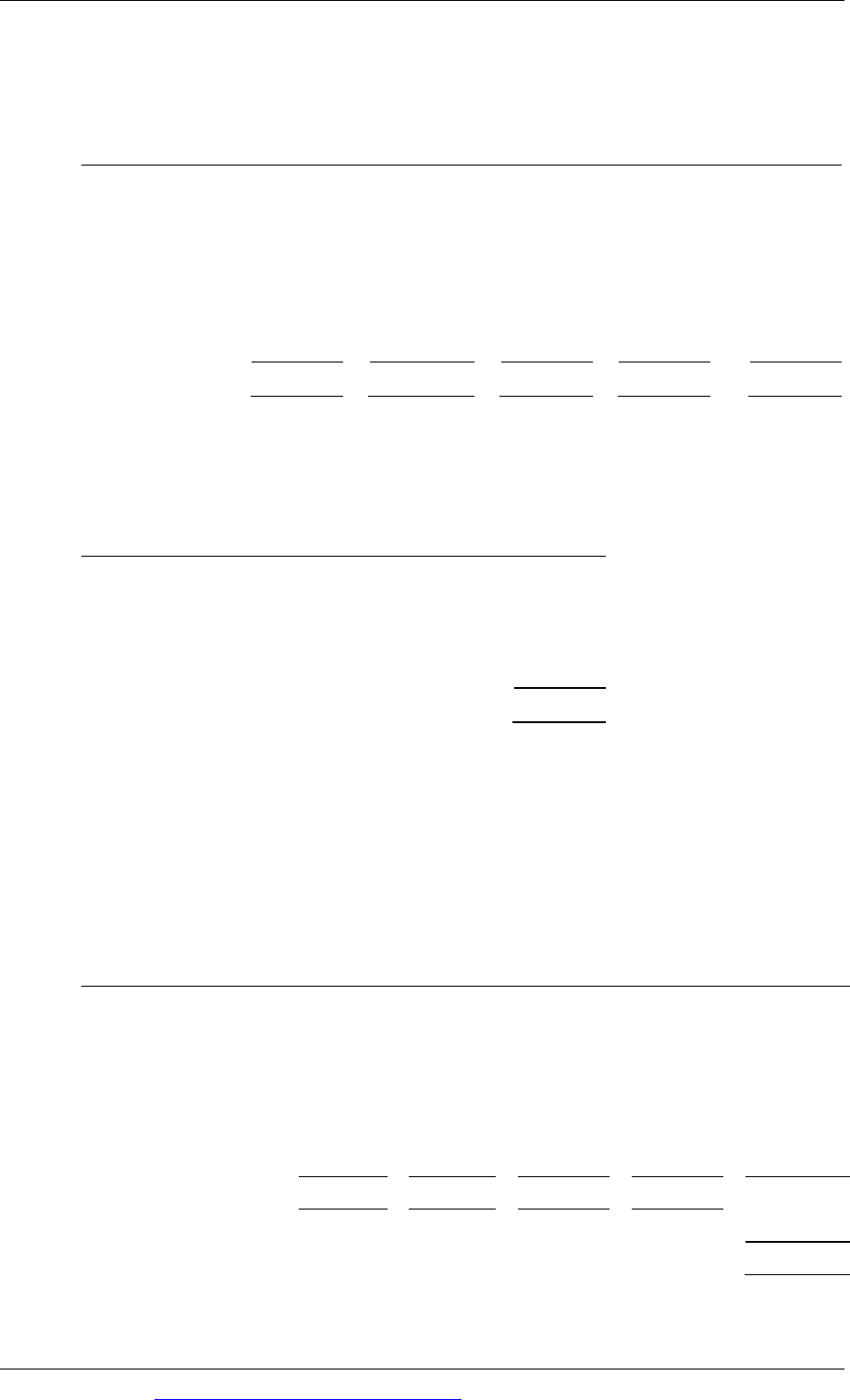
Answers
© EWP Go to www.emilewoolfpublishing.com for Q/As, Notes & Study Guides 457
Contribution per customer category
Total
contribution
Category of customer
C1
C2
C3 C4
$
$
$
$ $
Product A 120,000
12,000
24,000
24,000 60,000
Product B 75,000
30,000
0
22,500 22,500
Product C 144,000
14,400
28,800
14,400 86,400
Product D 162,000
48,600
16,200
32,400 64,800
Product E 160,000
32,000
0
32,000 96,000
Total 661,000
137,000
69,000
125,300 329,700
ABC apportionment rates
Number of
deliveries
Km per
delivery
Total
kilometres
C1 40 100 4,000
C2 80 200 16,000
C3 50 300 15,000
C4 100 150 15,000
50,000
Apportionment rates
Delivery costs: $250,000/50,000 = $5 per kilometre
Order processing: $105,000/(30 + 70 + 50 + 60) = $500 per order
Promotion events: $30,000/12 = $2,500 per event.
Statement of customer profitability
C1 C2 C3 C4 Total
$ $ $ $ $
Contribution 137,000 69,000 125,300 329,700 661,000
Activity costs
Delivery (20,000) (80,000) (75,000) (75,000) (250,000)
Order processing (15,000) (35,000) (25,000) (30,000) (105,000)
Promotion events 0 0 (5,000) (25,000) (30,000)
Customer profitability 102,000 (46,000) 20,300 199,700 276,000
Other fixed costs (80,000)
Company profit 196,000
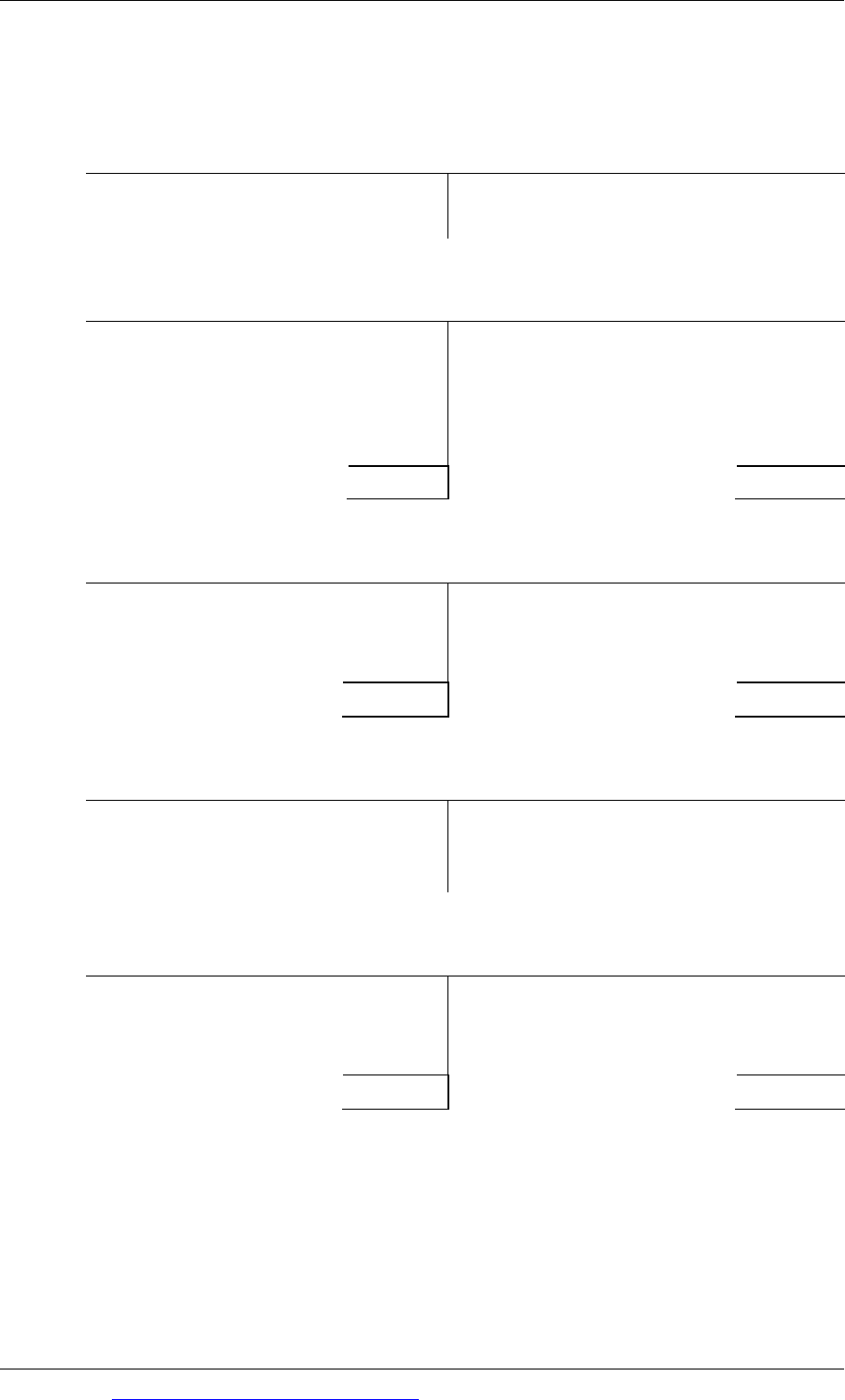
Paper F5: Performance management
458 Go to www.emilewoolfpublishing.com for Q/As, Notes & Study Guides © EWP
5 Backflush
Backflush accounting, with two trigger points
Raw materials inventory account
$
$
Creditors 5,000,000
Finished goods inventory 5,000,000
Finished goods inventory account
$
$
Raw
materials
(100,000 × 50)
5,000,000
Income statement
(98,000 × 80)
7,840,000
Conversion
costs (100,000 × 30)
3,000,000
Balance c/f (2,000 × 80)
160,000
8,000,000
8,000,000
Conversion costs account
$
$
Creditors (overheads) 3,000,000
Finished goods inventory 3,000,000
3,000,000
3,000,000
Sales
$
$
Income statement
(98,000
× 100) 9,800,000
Receivables (98,000 × 100) 9,800,000
Income statement
$
$
Finished goods 7,840,000
Sales 9,800,000
Profit 1,960,000
9,800,000
9,800,000
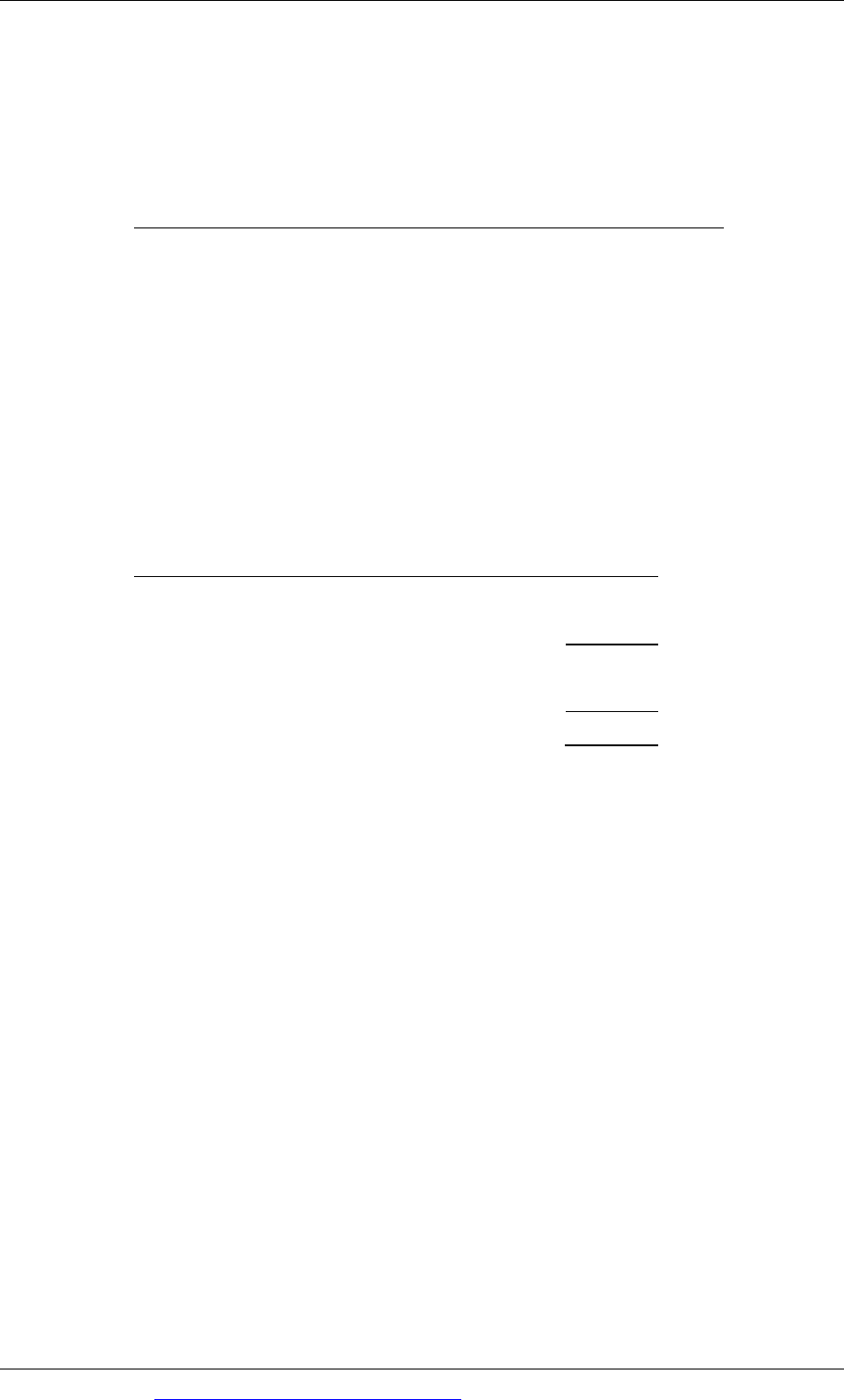
Answers
© EWP Go to www.emilewoolfpublishing.com for Q/As, Notes & Study Guides 459
6 Throughput
(a) Marginal costing approach
Profit will be maximised by producing output to maximise the contribution
per machine hour (contribution per unit of limiting factor).
Product X Product Y
Contribution per unit $6 $7
Machine hours per unit 1.5 hours 2 hours
Contribution per machine hour $4 $3.50
Priority for manufacture 1st 2nd
Profit will be maximised by making and selling 8,000 units of Product X in
each period (maximum sales demand). This will require 12,000 machine
hours. The remaining 20,000 machine hours should be used to make and sell
10,000 units of Product Y.
$
Contribution from Product X: 8,000 × $6
48,000
Contribution from Product Y: 10,000 × $7
70,000
Total contribution 118,000
Fixed costs 90,000
Profit 28,000
(b) Throughput accounting is based on the view that value is not added to a
product until the product is eventually sold. There is no value in inventory.
When there is a limiting factor restricting production, all costs except for the
cost of bought-in materials (raw materials, purchased components) are fixed
costs in the short-term, including direct labour costs and associated ‘variable’
overheads.
The aim should be to maximise throughput in a period, where throughput is
defined as sales minus the cost of bought-in materials.
The main difference between throughput accounting and marginal costing is
in the treatment of direct labour and variable overhead costs as a ‘fixed cost’ in
the short-term. In throughput accounting, fixed costs are referred to as ‘factory
cost’.
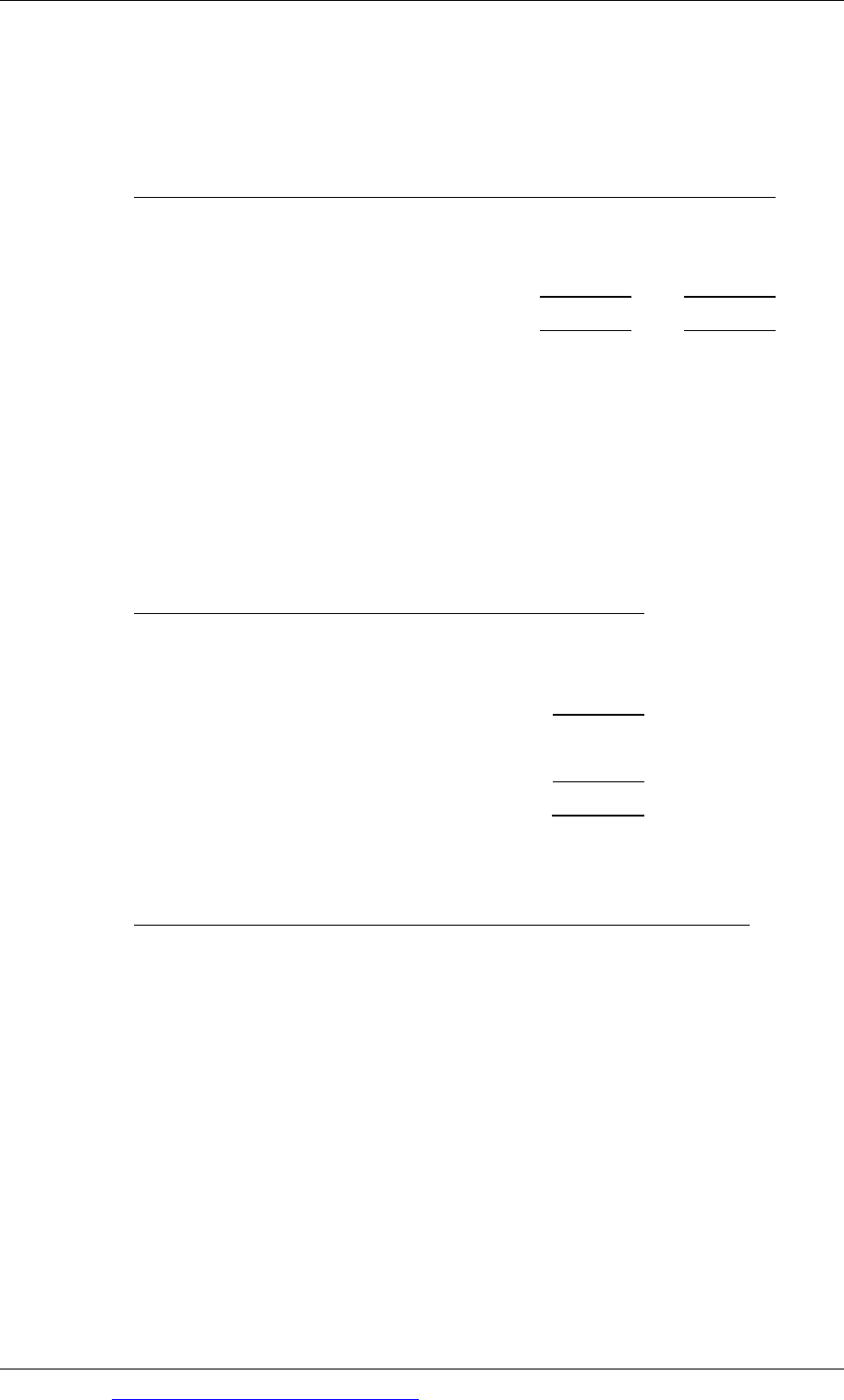
Paper F5: Performance management
460 Go to www.emilewoolfpublishing.com for Q/As, Notes & Study Guides © EWP
(c) Throughput accounting ratio =
Return per bottleneck unit / Factory cost per bottleneck unit
Here, the bottleneck resource is machine time.
Product X
Product Y
$
$
Sales price 22
27
Materials cost 10
9
Throughput 12
18
Machine hours per unit 1.5 hours 2 hours
Throughput/return per machine hour $8 $9
To calculate the cost per factory hour, we need to make an assumption about
direct labour cost and variable overhead costs. It is assumed that the direct
labour cost and variable overhead cost in the answer to part (a) is fixed in the
short-term.
$
Direct labour and variable overhead costs:
Product X: 8,000 × $6
48,000
Product Y: 10,000 × $11
110,000
Total contribution 158,000
Fixed costs 90,000
Factory cost in each period 248,000
Factory cost per machine hour = $248,000/32,000 hours = $7.75.
Product X Product Y
Return per machine hour $8 $9
Factory cost per machine hour $7.75 $7.75
Machine hours per unit 1.5 hours 2 hours
Throughput accounting ratio 1.03 1.16
Priority for manufacture 2nd 1st
Tutorial note: The aim should be to maximise the throughput accounting
ratio, and to ensure that the ratio is higher than 1.0. The throughput
accounting ratio for both Product X and Product Y is low, close to the
minimum acceptable level.
(d) Profit will be maximised by making and selling 12,000 units of Product Y
(maximum sales demand). This will use up 24,000 machine hours. The
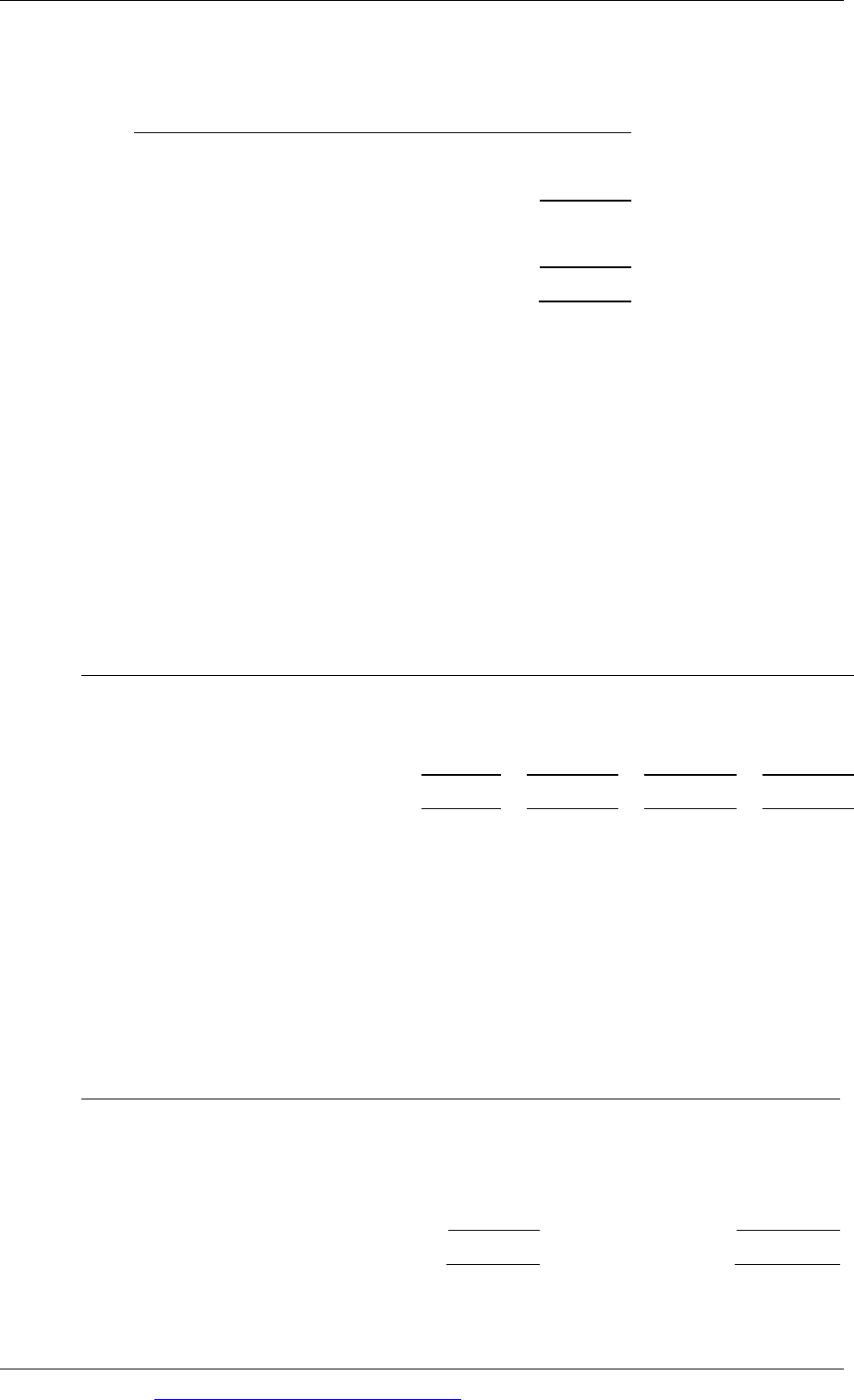
Answers
© EWP Go to www.emilewoolfpublishing.com for Q/As, Notes & Study Guides 461
remaining 8,000 machine hours should be used to make 5,333.33 units of
Product X.
$
Return from Product Y: 12,000 × $18
216,000
Return from Product Y: 5,333.33 × $12
64,000
Total return/throughput 280,000
Fixed costs 248,000
Profit 32,000
7 Throughput ratio
Throughput per pallet = $3,000 – $2,000 = $1,000.
Throughput per inspection hour = $1,000/0.5 hours = $2,000.
Operating expenses per inspection hour = $300,000/200 = $1,500.
Throughput accounting ratio = $2,000/$1,500 = 1.33.
8 Four products
W
X
Y Z
$
$
$ $
Sales price/unit 50.0
31.5
59.75 54.25
Variable cost/unit 10.0
11.5
11.75 12.25
Contribution per unit 40.0
20.0
48.00 42.00
Direct materials per unit ($) 5
4
8 6
Contribution per $1 direct material £8.0
£5.0
£6.0 £7.0
Priority for making and selling 1st
4th
3rd 2nd
Profit-maximising budget
Product
Sales units
Direct
materials
Contribution
per unit
Total
contribution
$
$ $
W (1st) 4,000 20,000
40 160,000
Z (2nd) 3,000 18,000
42 126,000
Y (3rd) - balance 5,000 40,000
48 240,000
78,000
526,000
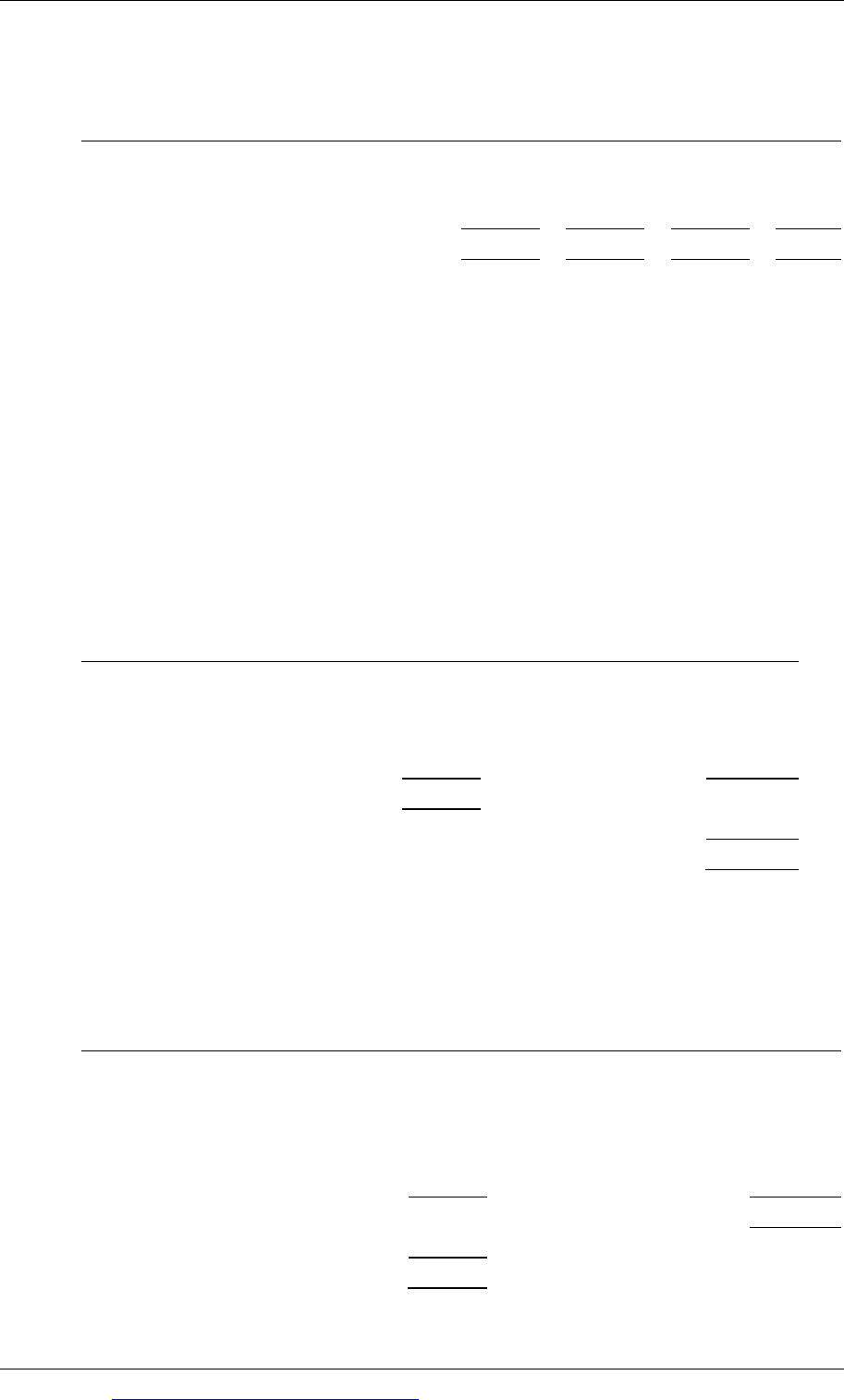
Paper F5: Performance management
462 Go to www.emilewoolfpublishing.com for Q/As, Notes & Study Guides © EWP
9 Limiting factors
(a)
A
B
C D
$
$
$ $
Sales price 100
110
120 120
Variable cost per litre 54
55
59 66
Contribution per litre 46
55
61 54
Direct labour hours/unit 3
2.5
4 4.5
Contribution /direct labour hour £15.33
£22
£15.25 £12
Priority for manufacture/sale 2nd
1st
3rd 4th
The fixed overhead absorption rate is $8 per hour. This can be calculated from the
overhead cost and direct labour hours for any of the four products.
The budgeted labour hours for calculating this absorption rate was 1,600 hours,
therefore budgeted fixed costs are 1,600 hours × $8 = $12,800.
The output and sales that will maximise contribution and profit is as follows:
Product Litres
Hours
Contribution
/litre
Contribution
/profit
$
$
B 150.0
375
55
8,250.0
A 200.0
600
46
9,200.0
C (balance) 92.5
370
61
5,642.5
1,345
23,092.5
Fixed costs (see above)
12,800.0
Profit
10,292.5
(b) In this situation, there is a minimum sales demand from Company Y that must
be met:
Product Litres Hours
Contribution
/litre
Contribution
$
$
A: (3 hours/litre) 20 60
46
920
B: (2.5 hours/litre) 20 50
55
1,100
C: (4 hours/litre) 20 80
61
1,220
D: (4.5 hours/litre) 20 90 54
1,080
280
4,320
Total hours available 1,345
Hours remaining 1,065
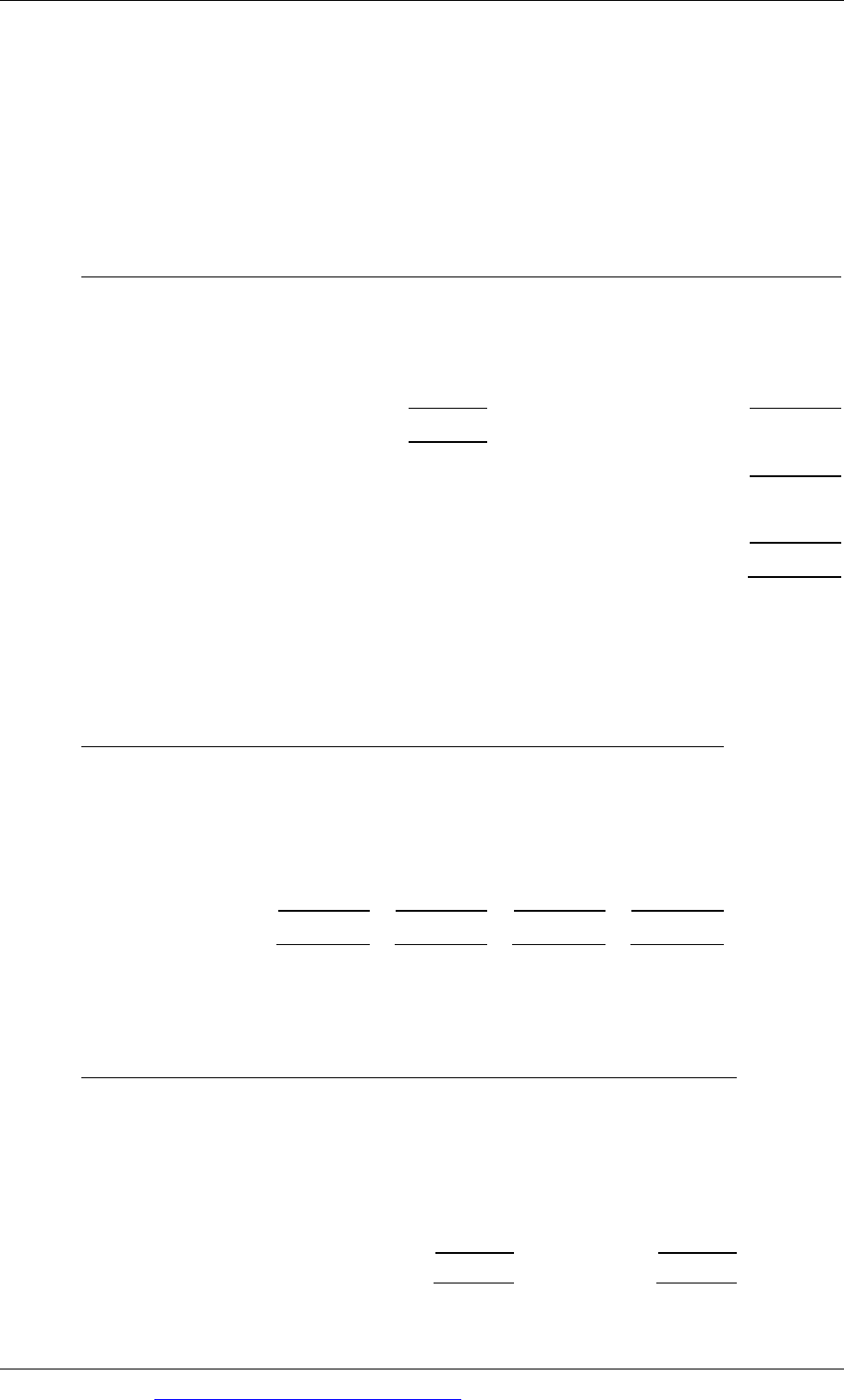
Answers
© EWP Go to www.emilewoolfpublishing.com for Q/As, Notes & Study Guides 463
The remaining 1,065 hours should be used to maximise contribution, using the same
priorities as before. However, maximum sales demand should be reduced by 20
litres for each product, to allow for the sales to Company Y.
The output and sales that will maximise contribution and profit, allowing for the
sales to Company Y, are as follows:
Product Litres Hours
Contribution/l
itre
Contribution/profi
t
$
$
B 130 325
55
7,150
A 180 540
46
8,280
C (balance) 50 200
61
3,050
1,065
18,480
Contribution from sales to Y
4,320
Total contribution
22,800
Fixed costs
12,800
Profit
10,000
10 Shortages
Working: contribution per unit
A
B
C
D
$/unit
$/unit
$/unit
$/unit
Profit 35
55
30
55
Fixed costs:
Production 180
240
150
270
Selling 145
225
120
215
Contribution 360
520
300
540
Resources required for the priority order for the major customer
Casing
Units
required
Steel
Direct labour
per unit
Total
per unit
Total
$
$
hours
hours
A 30 250
7,500
7.5
225.0
B 20 500
10,000
7.5
150.0
C 30 190
5,700
6.25
187.5
D 20 390
7,800
12.5
250.0
Total
31,000
812.5
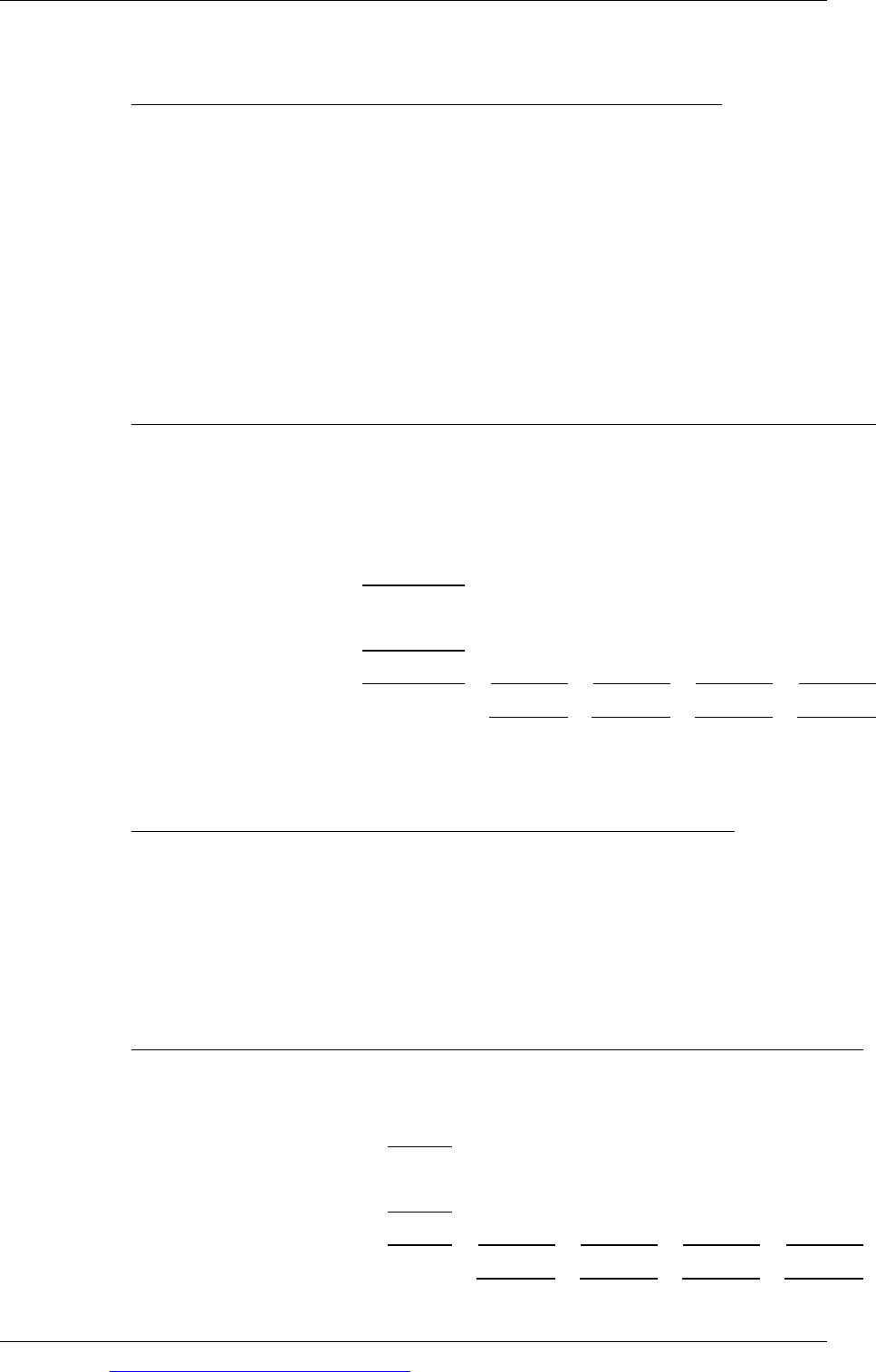
Paper F5: Performance management
464 Go to www.emilewoolfpublishing.com for Q/As, Notes & Study Guides © EWP
(a) Steel in short supply and restricted to $250,000
Casing A
B
C
D
$
$
$
$
Contribution/unit 360
520
300
540
Steel costs/unit 250
500
190
390
Contribution/$1 steel cost 1.44
1.04
1.58
1.38
Ranking for manufacture 2nd
4th
1st 3rd
It is assumed that the sales forecasts for the month are correct.
Profit-maximising production schedule
Steel
used
A
B C
D
$
units
units units
units
Priority order 31,000
30
20 30
20
Sales of C 51,300
270
Sales of A 67,500
270
Sales of D 70,200
180
220,000
Balance: Sales of B 30,000
60
Total steel available 250,000
Total production/sales
300
80 300
200
(b) Components are in short supply and restricted to 400 units
A
B
C D
Contribution/unit $360
£520
$300 $540
Components/unit 1
1
1 1
Contribution/component $360
$520
$300 $540
Ranking for manufacture 3rd
2nd
4th 1st
Profit-maximising production schedule
Components used
A
B C
D
units
units
units units
units
Priority order 100
30
20 30
20
Sales of D 180
180
280
Balance: Sales of B 120
120
Total available 400
Total production/sales
30
140 30
200
